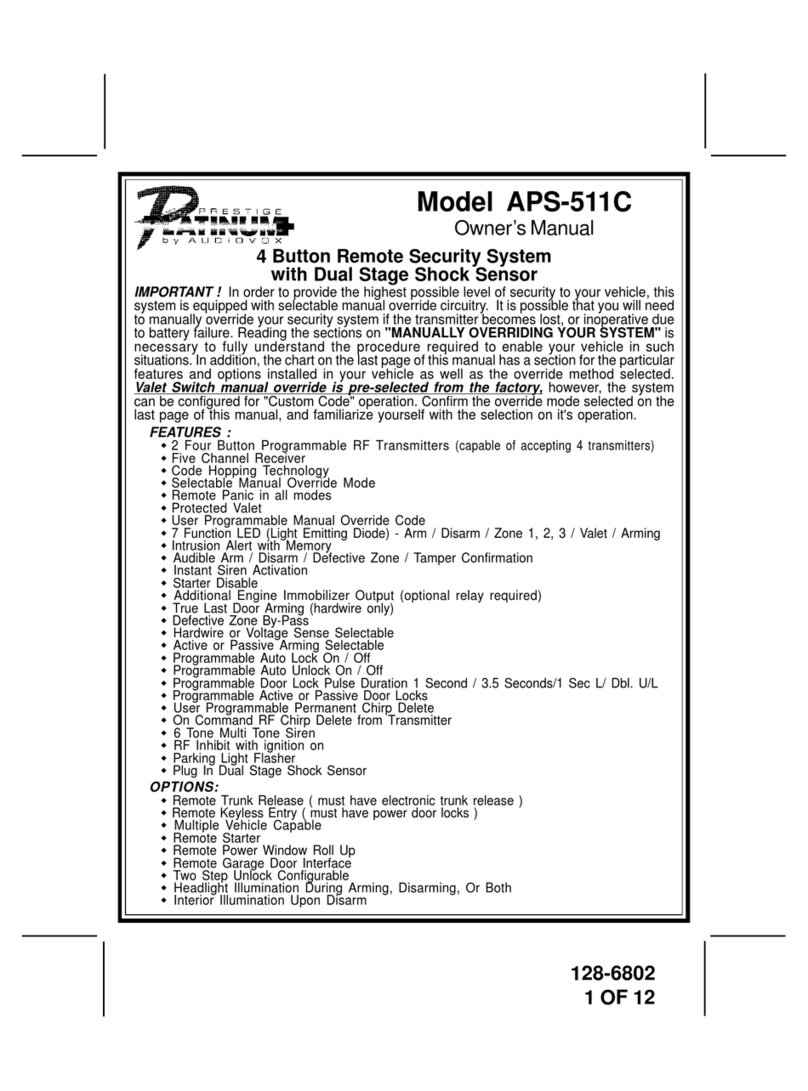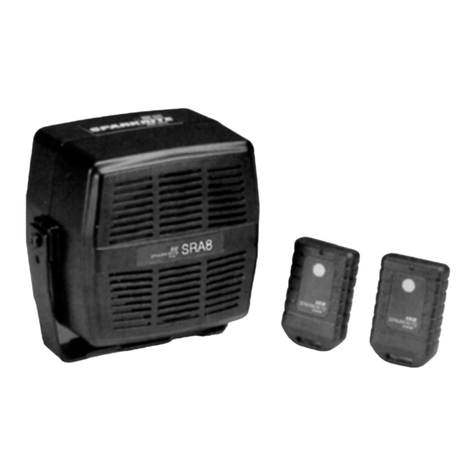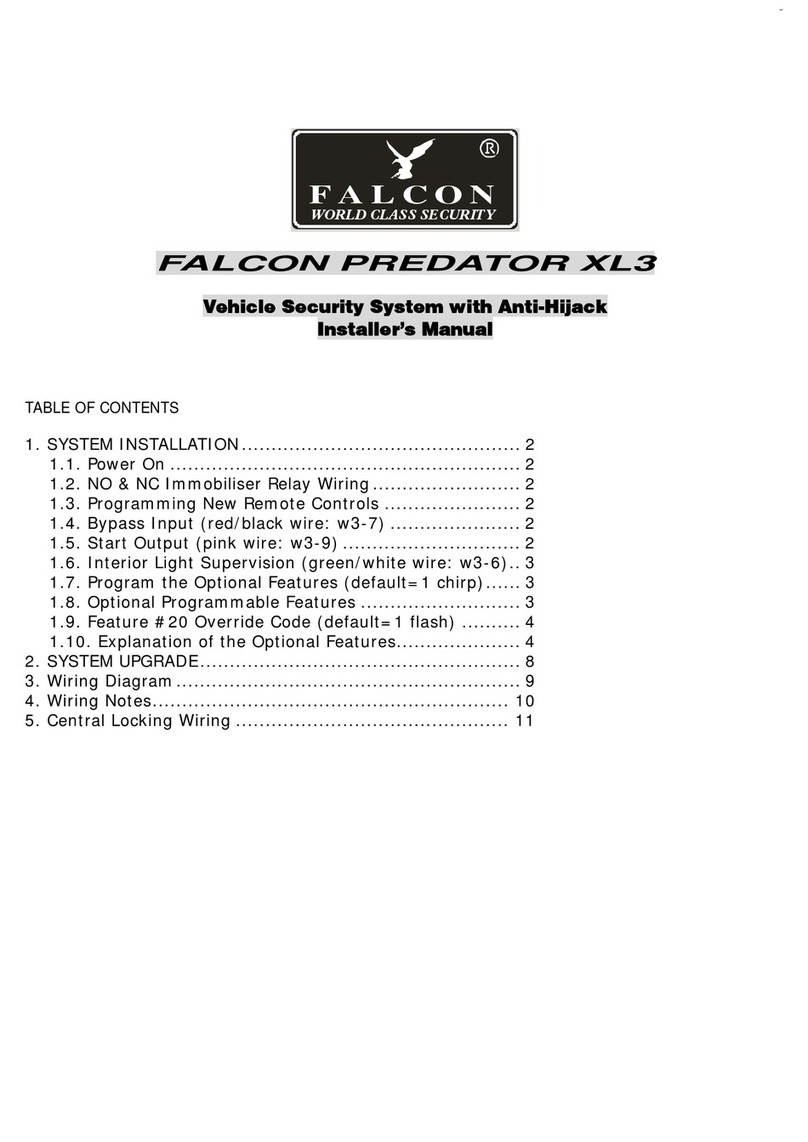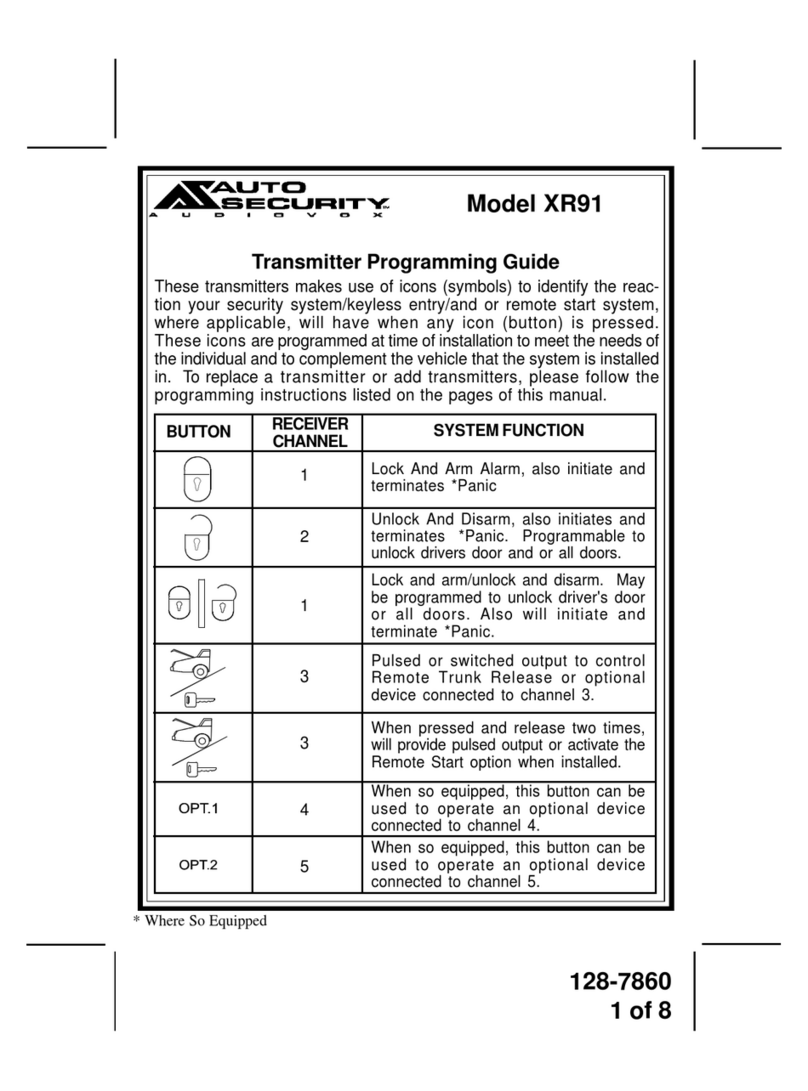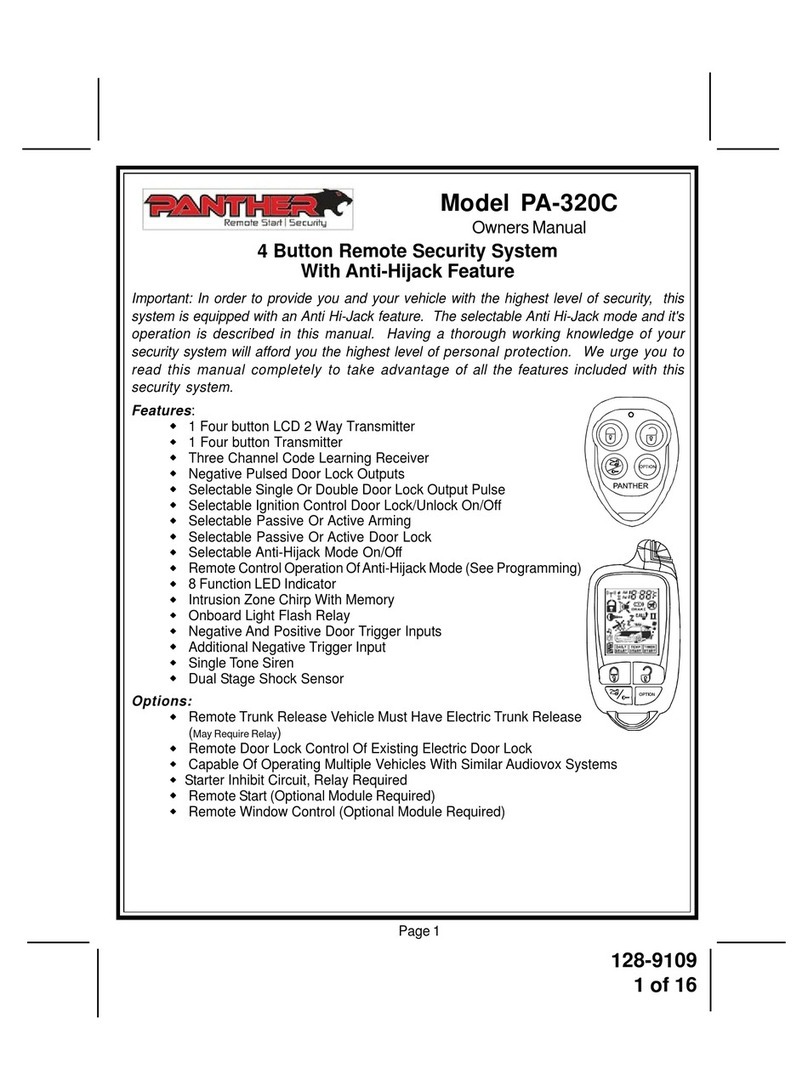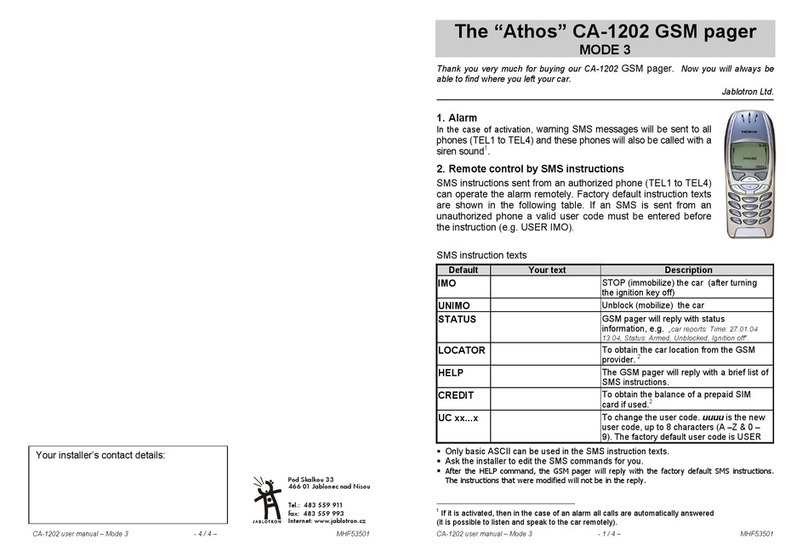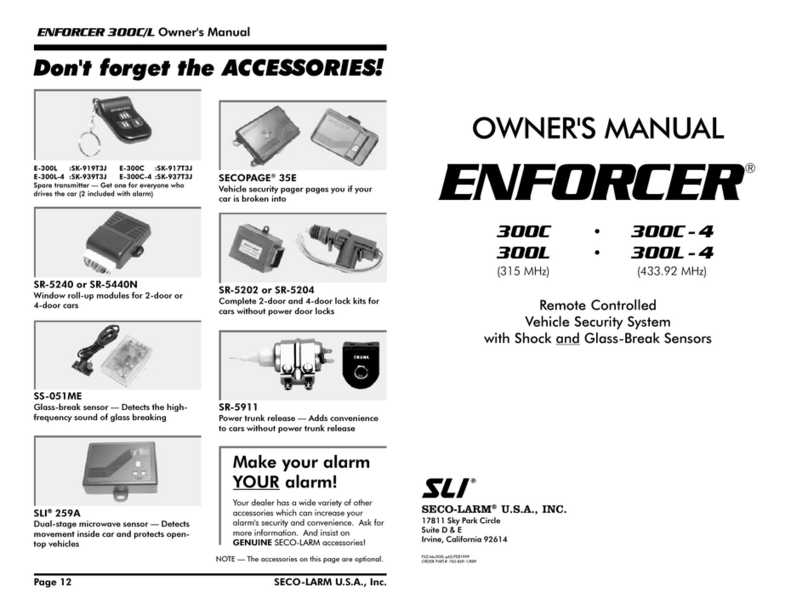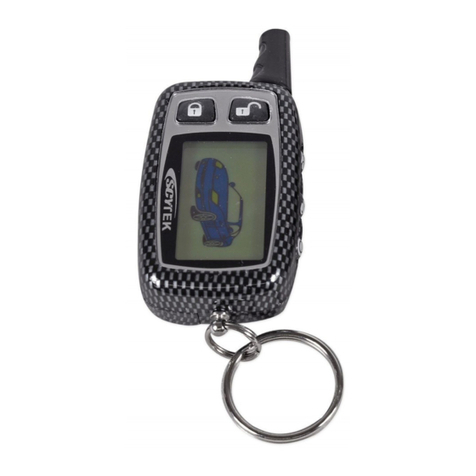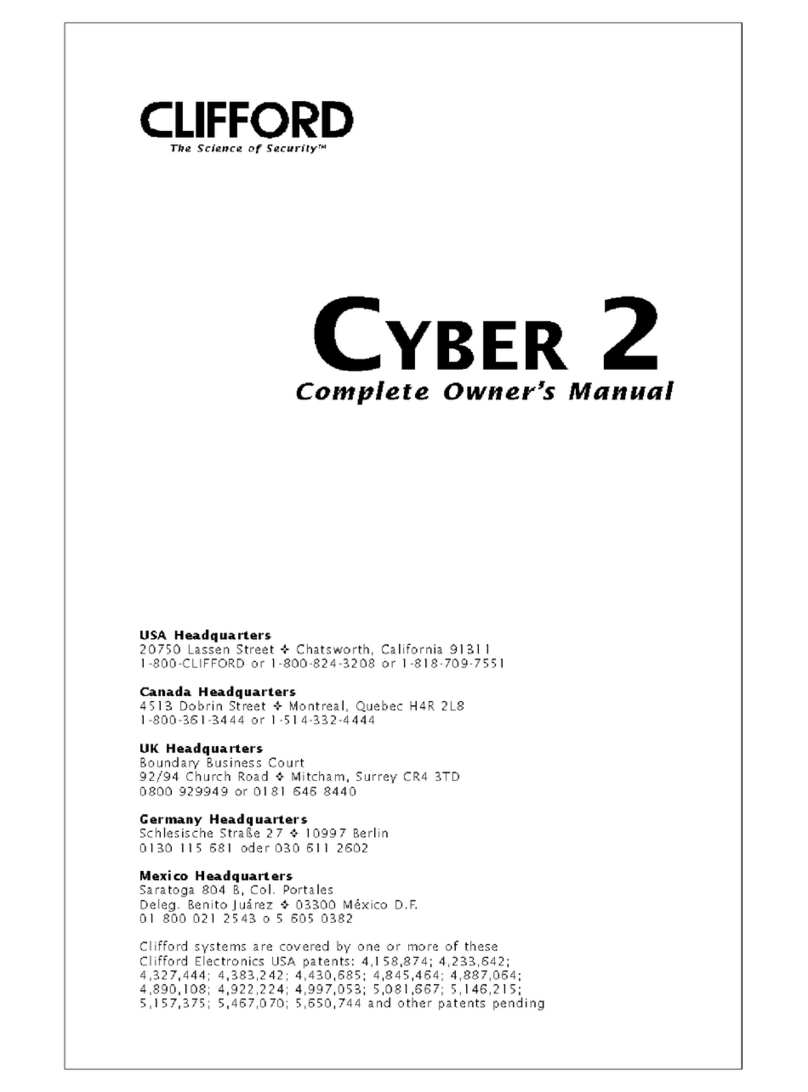
128-9104
8 of 32
8
WARNING! This connection is a safety wire and must be connected as shown and tested as
specified. Failure to do so may result in personal injury or property damage. See detail of wiring
in the following diagram. This wire may also be used if the vehicle brake light circuit switches
ground to the brake lights. An isolation diode must be used for ground switched brake light
circuits and must be connected to the output of the brake switch.
Brown/Red Trace Wire: Brake Positive Inhibit Input Plus Trigger When Armed
The Brown/Red Trace wire provides an instant shutdown for the Remote Start Control module
whenever it gets + 12 volts, it also triggers the alarm when armed. If the Brake lights switch in
the vehicle switches + 12 volts to the brake light circuit, connect the Brown/Red wire to the
output side of the brake switch. This will allow the Remote Start to shut down if an attempt is
made to operate the vehicle without the key while running under the control of the Remote Start.
In most vehicles, in order to shift into gear, the brake pedal must be depressed. The brake input
will in turn cause the remote start unit to shut off.
Note this input, if switched to +12 Volts, will also trigger the alarm if it is armed.
Red/White Wire: Delayed 250 mA Pulsed Channel 3 Output
The Red/White wire supplies a 250 mA ground pulsed output whenever channel three of the
receiver is accessed. Pressing the pre-programmed transmitter button for three seconds
will access channel three. This is a low current output and must be connected to a relay to
supply power to the trunk release or the circuit you wish to control. Connect the Dark Blue
wire to terminal # 86 of a VF45F11 P&B relay or equivalent. Connect terminal # 85 of the
relay to a fused + 12 volt source. Connect the common, normally open, and normally closed
contacts of the relay to perform the selected function of channel 3.
Blue/Black Wire: Ground Output While Running Under Remote Start Control
This wire provides a 250 mA ground output that becomes active 3 seconds before the
Remote Start Unit initializes and remains grounded while running plus an additional 4 seconds
after the Remote Start Unit turns off. In all of the applications described below, a relay will be
required. The Blue/Black wire can be used to accommodate the following situations:
A. Shock Sensor By Pass:
B.AdditionalIgnition Output:
C.GMVATSKey Override:
Purple/Black Trace Wire: 250 mA Latched Channel 4 Output
The Purple/Black Trace wire supplies a 300 mA switched output whenever channel four of the
receiver is accessed. Pressing the pre-programmed transmitter button(s) will access channel
four and will remain active, for up to 20 seconds, as long as the transmitter button(s) is held.
This is a low current output and must be connected to a relay to supply power to the device you
intend to control. Connect purple/black wire to terminal #86 of a VF45F11 P&B relay or equiva-
lent. Connect terminal #85 of the relay to a fused + 12 volt source. Connect the common,
normally open, and normally closed contacts of the relay to perform the selected function of the
channel 4 output.
NOTE: This wire also can be used for defrost activation as dictated by the setting of feature # 1
of Bank 3. Anytime the vehicle is running under control of the Remote Start and Channel 4 is
activated, then dependent on the selection of this feature, Purple/Black will be activated as a
pulse for 1 second, or for 10 minutes. Note this wire will not operate when the vehicle is running
under the power of the ignition key, only while under the control of the remote start or if not used
for defrost then an output will occur as indicated above.
Brown/Black Wire : 250 mA Horn Output
The Brown/Black wire is provided to beep the vehicle’s horn. This is a transistorized low
current output, and should only be connected to the low current ground output from the

